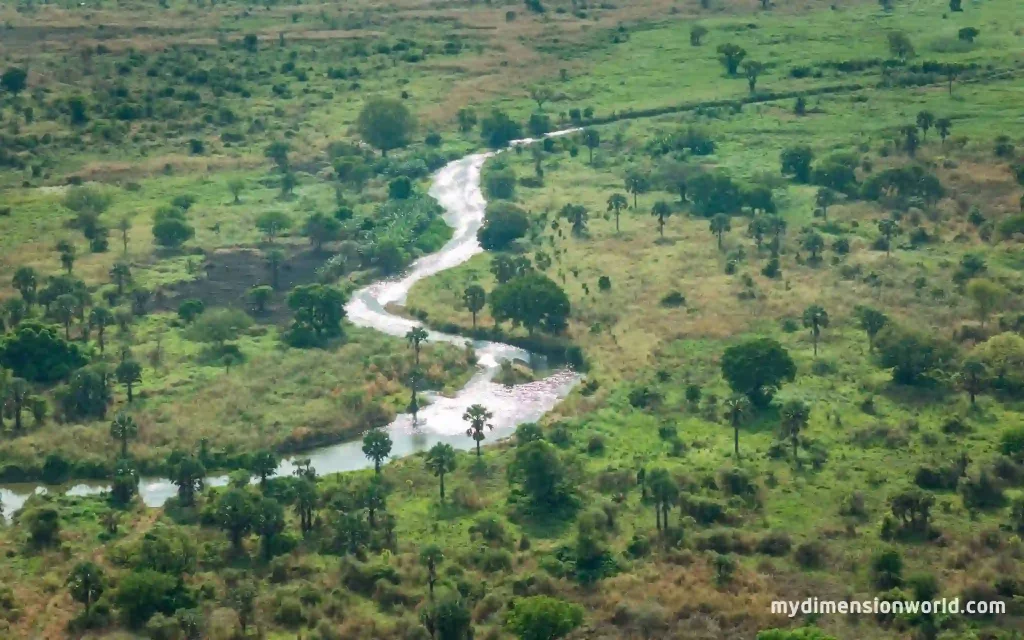Rivers are not only crucial sources of water and life but also possess an innate beauty that captivates us. They meander through vast landscapes, shaping the very fabric of our planet.
In this article, we explore some of the longest rivers across different continents, delving into their significance, characteristics, and the wonders they hold.
Contents
1. Nile River (Africa)

The Nile River, spanning an astounding length of approximately 6,650 kilometers (4,130 miles), stands as the longest river in Africa and the world.
Its majestic journey begins in Lake Victoria, the largest lake on the continent, and flows northwards through several countries including Uganda, Sudan, and Egypt, before emptying into the Mediterranean Sea.
The Nile has played a significant role in the development of ancient civilizations, providing water for agriculture and transportation. Its fertile banks nurtured the rise of the Egyptian civilization, leaving behind a rich historical legacy that continues to enchant us today.
2. Amazon River (South America)
Flowing across the dense tropical rainforests of South America, the Amazon River spans approximately 6,400 kilometers (4,000 miles) in length.
Originating in the Peruvian Andes and traversing through Brazil, Colombia, and several other countries, the Amazon holds the distinction of being the largest river in terms of discharge and drainage basin.
Its seemingly endless network of tributaries supports unparalleled biodiversity, hosting countless species of plants, animals, and indigenous communities.
Navigating the vast expanse of the Amazon unveils a mesmerizing ecosystem teeming with life, making it a true wonder of our natural world.
3. Yangtze River (Asia)
In the heart of the Asian continent lies the Yangtze River, China’s lifeline and the longest river in Asia.
With a length of approximately 6,300 kilometers (3,915 miles), it journeys from the Tibetan Plateau through the breathtaking Three Gorges and finally merges with the East China Sea.
The Yangtze River holds great cultural, historical, and ecological significance for China, serving as a vital transportation route and a source of hydroelectric power.
Along its course, the river showcases magnificent landscapes, ancient cities, and diverse ecosystems, making it a cherished symbol of Chinese heritage.
4. Mississippi River (North America)
Spanning across the heartland of North America, the Mississippi River stretches approximately 3,780 kilometers (2,350 miles).
Flowing through the United States, it carves a path from Lake Itasca in Minnesota to the Gulf of Mexico.
The Mississippi River has played a pivotal role in shaping American history, serving as a trade route, a source of livelihood for countless communities, and a subject of inspiration for writers and artists.
Its iconic meandering course is an embodiment of the region’s natural beauty, connecting the landscape and people along its banks.
5. Volga River (Europe)
The Volga River, spanning a length of approximately 3,530 kilometers (2,193 miles), flows through the heart of Russia, making it the longest river in Europe.
Originating from the Valdai Hills, it travels southward, crossing several major cities including Moscow, before emptying into the Caspian Sea.
The Volga River holds great cultural significance for Russia, providing a vital transportation route and playing a significant role in trade and commerce. Its picturesque landscapes, dotted with historic towns and villages, offer glimpses into the rich tapestry of Russian culture and heritage.
6. Murray-Darling River System (Australia)
In the land down under, the Murray-Darling River system takes the spotlight as Australia’s longest river system, extending over 3,370 kilometers (2,090 miles).
Comprising both the Murray River and the Darling River, this expansive system winds through the arid interior of the continent, sustaining vital ecosystems and providing water for agriculture.
The Murray-Darling River system holds immense ecological importance, supporting unique flora and fauna adapted to Australia’s harsh conditions.
Exploring its waters and surrounding landscapes offers a profound understanding of Australia’s diverse ecology and the delicate balance between human needs and environmental conservation.
7. Onyx River (Antarctica)
Amidst the frozen vastness of the Antarctic continent lies the Onyx River, a captivating river that symbolizes the resilience of life in extreme conditions.
Although relatively short, spanning approximately 32 kilometers (20 miles), it is considered the longest river in Antarctica.
Fed by the melting ice of the Wright Lower Glacier, the Onyx River flows through the McMurdo Dry Valleys, one of the driest regions on Earth. This river is a scientific treasure trove, providing valuable insights into the unique ecosystems and microbial life that manage to thrive in Antarctica’s frozen landscapes.
Conclusion
From the grandeur of the Nile in Africa to the untamed wilderness of the Amazon in South America, and from the historical significance of the Yangtze in Asia to the cultural heritage of the Volga in Europe, the longest rivers on each continent captivate our imagination and remind us of the profound connection between water, land, and life.
These rivers, with their distinctive characteristics and awe-inspiring landscapes, offer glimpses into the diverse beauty and richness our planet has to offer.
Exploring the majesty of these rivers not only broadens our understanding of the world but also encourages us to cherish and protect these invaluable natural resources for generations to come.
